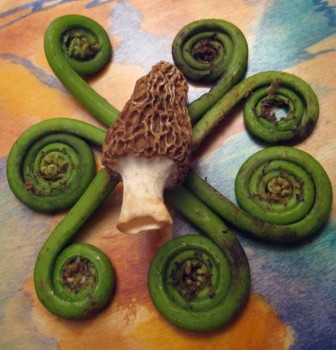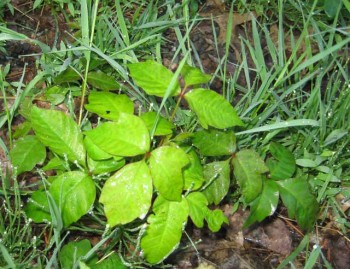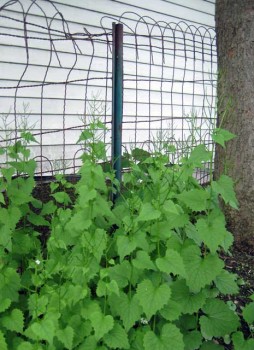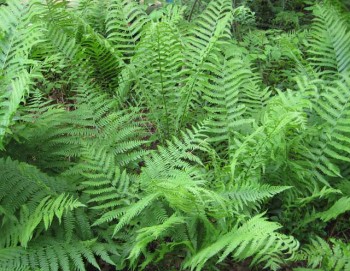
It’s been a number of years since I made it out east in the spring—and what a spring it is! Apparently it’s been raining more than usual, such that the outdoors is carpeted in lush new green growth the likes of which I seldom see. Coming from the Colorado high country, where snow still covers the forest floor, I have to admit I’m not sure where to begin.
Gregg and I headed first to Woodstock, New York, to visit my friend Aurora. The Hudson River Valley where Woodstock is located is truly an Eden of wild foods, a fact that she pointed out has been the case for thousands of years—and the reason so many native people relied upon this area for hunting and gathering. Granted, many of the plants that now flourish in these parts were imported by early settlers, but I am overwhelmed by the abundance of wild edibles I have an encountered.
In the Hudson River Valley we found the following plants ripe for the picking (in addition to many other that are not in season): stinging nettles, garlic mustard, mint, clovers, cleavers, goosefoot, mallow, burdock, several varieties of dock, a few late fern fiddleheads, sorrel, wild carrot, dandelion, plantain, and milkweed shoots. I helped Aurora weed some of these plants out of her garden and ended up with a cooler bag full of wild edibles. Later, on the forested grounds of my Alma Mater, Bard College, we found wild ginger, mayapples not yet fruiting, spicebush, and sweet cicely.

In both places, we also found plentiful poison ivy—so it’s a good cautionary note for the would-be forager in poison ivy-bearing lands to recognize and know this plant before sticking one’s hand into a patch of it or eating plants that have come into contact with it. We found plentiful poison hemlock too—a plant one would not want to confuse with wild carrot on account of its dangerous toxicity.
Morels and Fiddleheads, Oh My!
I’m tickled by Aurora’s willingness to indulge my interest in edible wild plants. Much to my delight, she surprised Gregg and me that first night with a dinner of local wild-foraged morels and fiddleheads that she’d purchased at a health food store in town. Both morels and fiddleheads top my list of wild edibles to find when I go east, so it was awesome to get a good look at (and taste of) them for the first time. She served the two sautéed together in butter with sweet potato ravioli, a tasty salad, and Knudsen’s ginger ale made from real ginger. Delicious!
I have to say that store-bought wild edibles are a first for me. I am not yet sure how commercial wildcrafting works—how it is regulated or its impact on the environment. First Ways blogger Rebecca Lerner asks, Is commercial foraging a green idea? and there is a healthy conversation taking place on her blog that sheds some light on the current state of the debate, for starters.
I do know that some plants, such as wild ginseng, have been over-foraged by commercial collectors, leading to scarcity in areas where it was once abundant. Unitedplantsavers.org explains that “American ginseng is listed is listed in the Convention on International Trade in Endangered Species (CITES) Appendix 11 and global trade in wild-harvested root is regulated.” With ginseng or any other wild plants, I imagine there must be a range of ethics among commercial collectors—from those who manage their wild stands, taking care to forage sustainably, to those who obliterate plant beds in the name of profit.

Eat Invasives Before They Eat the Natives
On the flip side, the foraging of “invasive” plant species—particularly those non-native plants that compete with native flora and fauna—is highly encouraged in some parts. Take, for example, the growing popularity of the Garlic Mustard Challenge, now underway, which the Stewardship Network explains “challenges folks to collaboratively remove, or pull, at least 100,000 pounds of garlic mustard between mid-April and late June.” The goal is to eradicate a pest in order to foster healthy ecosystems in which native plants can thrive.
We found garlic mustard (Alliaria petiolata) in Woodstock’s Magic Meadow, and I read selections from Thayer’s garlic mustard entry (Nature’s Garden, 2010) aloud to Aurora and Gregg as we hiked. “He calls it ‘the most hated weed in the land,’ and ‘that despicable displacer of our beloved woodland flora,’” I read. Thayer says it should be pulled out prior to flowering lest one lose a long list of native plants, including Dutchman’s breeches and jack in the pulpit.
“Yeah,” Aurora laughed. “You don’t want the Dutchman to lose his breeches lest we see his jack in the pulpit!”
“When it comes to invasive species, a villain in the wild can become a hero on the plate,” Terra Brockman writes in From Pest to Pesto, her overview of the role wildcrafters can play in the eradication of garlic mustard. Included is a recipe for Garlic Mustard Pesto, although I haven’t had a chance to try it yet.

Still Searching for Morels and Fiddleheads
But back to the morels and fiddleheads—for I left Colorado for the east with high hopes to find these particular wild edibles, and I took Aurora’s dinner as near proof that they were in season. Armed with Thayer’s chapter on ferns (The Forager’s Harvest, 2006), then, I set out to distinguish the edible ostrich fern from the plentiful, inedible cinnamon fern and others. Once I recognized the ostrich, I found it to be ubiquitous—growing not only in the forest but also in carefully and less-than-carefully tended landscapes, including underneath Aurora’s window. Unfortunately, all but two small fiddleheads were past their prime—we quickly gobbled those—and I have found this to be the case in all fern-bearing areas I’ve discovered on this trip since then. Next time, I guess.
I do want to note one thing I gleaned from Thayer, which is his preference to eat not only the curled top of the fiddleheads, but also the straight part of the stems on which they are borne, a part which he actually finds preferable to the curled top. I say this because the store-bought fiddleheads were only the top curled parts, so there is a good chance the collector not only missed out on the yummiest part, but also on a few extra dollars! I’ll have to verify the tasty-stem-assertion the next time I’m in fiddlehead land in fiddlehead season, however, as I seem to have missed it this time.
The morels continue to elude me too. I’ve spent two bush-whacking hikes, now, on my hands and knees, seeking out morels. In All That the Rain Promises and More (1991), David Arora explains that morels, particularly the black morels, can blend in so well with the surrounding leaf-strewn forest floor that they can be near impossible for the untrained eye to distinguish. They can take up to two months to develop, however, so my search for morals will continue for the duration of this trip.
Stay Tuned for News from the Cooler Bag
Just as the wealth of wild edibles here in the east has besieged me, so has the glut of information and stories I’ve collected regarding them. It’s not always easy to sit down and put pen to paper while visiting, let alone to cook up one’s wild findings in someone else’s kitchen—hence my traveling cooler bag of wild goodies and this stilting backlog of wild edible stories in my head. Still, I’m doing my best to cook things up and write through the din whenever I get a chance—so please, stay tuned for more news from the cooler bag. And thanks, as always, for visiting!

Leave a Reply